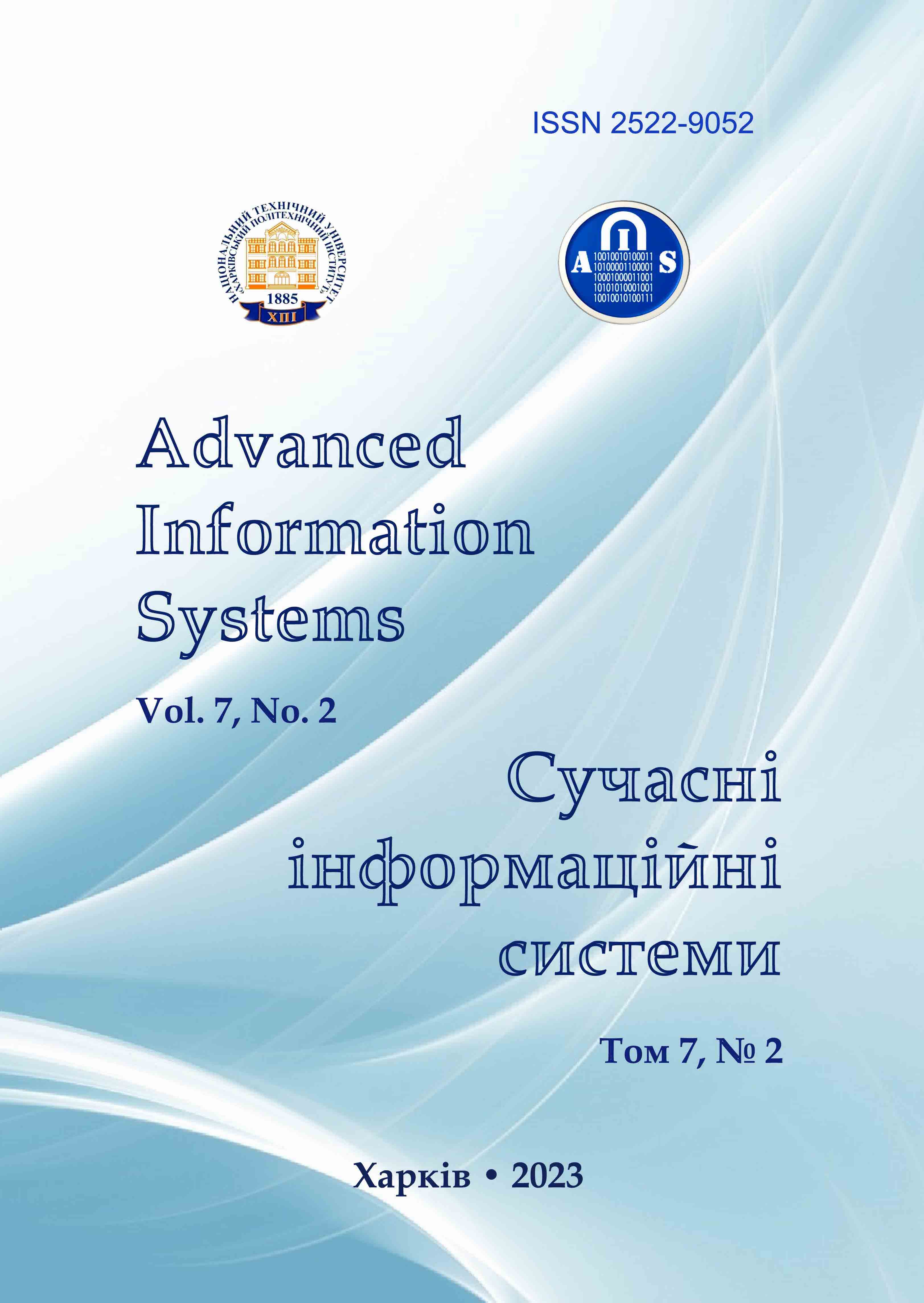BIOMETRIC AUTHENTICATION UTILIZING CONVOLUTIONAL NEURAL NETWORKS
Main Article Content
Abstract
Relevance. Cryptographic algorithms and protocols are important tools in modern cybersecurity. They are used in various applications, from simple software for encrypting computer information to complex information and telecommunications systems that implement various electronic trust services. Developing complete biometric cryptographic systems will allow using personal biometric data as a unique secret parameter instead of needing to remember cryptographic keys or using additional authentication devices. The object of research the process of generating cryptographic keys from biometric images of a person's face with the implementation of fuzzy extractors. The subject of the research is the means and methods of building a neural network using modern technologies. The purpose of this paper to study new methods for generating cryptographic keys from biometric images using convolutional neural networks and histogram of oriented gradients. Research results. The proposed technology allows for the implementation of a new cryptographic mechanism - a technology for generating reliable cryptographic passwords from biometric images for further use as attributes for access to secure systems, as well as a source of keys for existing cryptographic algorithms.
Article Details
References
Dodis, Y., Reyzin, L. and Smith, A. (2004), “Fuzzy Extractors: How to Generate Strong Keys from Biometrics and Other Noisy Data”, Advances in Cryptology - EUROCRYPT 2004, Berlin, pp. 523–540, doi: https://doi.org/10.1007/978-3-540-24676-3_31.
Boyen, X. (2004), “Reusable cryptographic fuzzy extractors”, Proceedings of the 11th ACM conference on Computer and communications security, New York, NY, USA, Oct. 2004, pp. 82–91, doi: https://doi.org/10.1145/1030083.1030096.
Álvarez, F. H. and Encinas, L. H. (2009), “Security Efficiency Analysis of a Biometric Fuzzy Extractor for Iris Templates”, Computational Intelligence in Security for IS, Berlin, pp. 163–170. doi: https://doi.org/10.1007/978-3-642-04091-7_20.
Uludag, U., Pankanti, S., Prabhakar, S. and Jain, A. K. (2004), “Biometric cryptosystems: issues and challenges,” Proceedings of the IEEE, vol. 92, no. 6, pp. 948–960, Jun. 2004, doi: https://doi.org/10.1109/JPROC.2004.827372.Liu
Jin, Z., A. Teoh, B. J., Goi, B.-M. and Tay, Y.-H. (2016), “Biometric cryptosystems: A new biometric key binding and its implementation for fingerprint minutiae-based representation”, Pattern Recognition, vol. 56, pp. 50–62, Aug. 2016, doi: https://doi.org/10.1016/j.patcog.2016.02.024.
Fuller, B., Reyzin, L. and Smith, A. (2914), When are Fuzzy Extractors Possible? Available at: http://eprint.iacr.org/2014/961.
Lutsenko, M., Kuznetsov, A., Kiian, A., Smirnov, O. and Kuznetsova, T. (2021), “Biometric Cryptosystems: Overview, State-of-the-Art and Perspective Directions,” Advances in Information and Communication Technology and Systems, Cham, pp. 66–84. doi: https://doi.org/10.1007/978-3-030-58359-0_5.
Schneier, B. (1996), Applied cryptography : protocols, algorithms, and source code in C, Wiley, New York, available at: http://archive.org/details/appliedcryptogra00schn_328.
Menezes, A. J., van Oorschot, P. C., Vanstone, S. A., van Oorschot, P. C. and Vanstone, S. A. (2018), Handbook of Applied Cryptography. CRC Press, doi: https://doi.org/10.1201/9780429466335.
Klima, R. E. and Sigmon, N. P. (2018), Cryptology : Classical and Modern, Chapman and Hall/CRC, doi: https://doi.org/10.1201/9781315170664.
Rubinstein-Salzedo, S. (2018), Cryptography, Cham: Springer International Publishing, 2018. doi: https://doi.org/10.1007/978-3-319-94818-8.
Delfs, H. and Knebl, H. (2015), Introduction to Cryptography, Springer, Berlin, doi: https://doi.org/10.1007/978-3-662-47974-2.
Amin, R., Gaber, T., ElTaweel, G. and Hassanien, A. E. (2014), “Biometric and Traditional Mobile Authentication Techniques: Overviews and Open Issues”, Bio-inspiring Cyber Security and Cloud Services: Trends and Innovations, A. E. Hassanien, T.-H. Kim, J. Kacprzyk, and A. I. Awad, Eds. Springer, Berlin, pp. 423–446. doi: https://doi.org/10.1007/978-3-662-43616-5_16.
Jain, A. K., Ross, A. and Prabhakar, S. (2004), “An introduction to biometric recognition”, IEEE Transactions on Circuits and Systems for Video Technology, vol. 14, no. 1, pp. 4–20, Jan. 2004, doi: https://doi.org/10.1109/TCSVT.2003.818349.
Clarke, N. L. and Furnell, S. M. (2007), “Advanced user authentication for mobile devices”, Computers & Security, vol. 26, no. 2, pp. 109–119, Mar. 2007, doi: https://doi.org/10.1016/j.cose.2006.08.008.
Geitgey, A. (2021), ageitgey/face_recognition, available at: https://github.com/ageitgey/face_recognition.
King, D. E. (2015), “Max-Margin Object Detection”, arXiv:1502.00046 [cs], available at: http://arxiv.org/abs/1502.00046.
